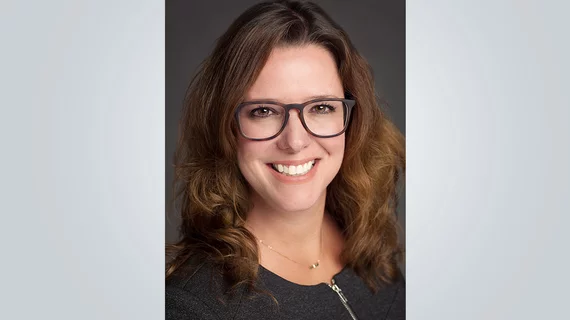Q&A: ASRT president on why states need stronger imaging standards, licensing
Next week kicks off National Radiologic Technology Week. Radiologic technologists are a crucial part of producing high-quality medical images, however many states require little or no certification standards to operate modalities. HealthImaging spoke with Melissa Jackowski, president of the American Society of Radiologic Technologists (ASRT) about the group’s legislative efforts and how they impact radiology.
HealthImaging: In 2014 ASRT switched from focusing on legislation at the federal level to the state level. Why was that?
Jackowski: In 1981 Congress passed the Consumer Patient Radiation Health and Safety Act, which directed the Secretary of Health and Human Services within states to set up licensing for anyone who administered ionizing or non-ionizing radiation for both medical and dental procedures. In the eleventh hour, they took the teeth out of the bill. As a result, the standards were adopted, but rendered it discretionary for whether states followed them, and included no sanctions for compliance.
We’ve been fighting since 1981 to uphold those standards, but because of this, not all states established standards. That means many states have no minimum education and credentialing standards for those who produce medical imaging and radiation therapy.
How has working on the state-level been different?
We’ve provided additional resources for state members to work toward licensure in the states that don’t have any. Those currently include: Alabama, Idaho, Missouri, Nevada and the District of Columbia. Those states have no standard for any discipline, which includes radiography, radiation therapy, nuclear medicine, MRI, CT, and all other modalities.
Even in states that do require licensure, the language and the strength of the laws vary. What we’re trying to do now is work with every state to ensure they have licensure for all modalities and include strong language. We have conference calls, work with lobbyists and go to states to lobby their legislature. Currently we’re working with many on their legislative activity for 2019.
Can you give an example of a state that needs regulation?
One state that absolutely needs assistance—and I can say that because it’s my state—is North Carolina. We (North Carolina) just came off the list of no standards. We did that by working with the Division of Radiation Protection and changing language within regulations. Now, when that group goes out to inspect equipment, they are also checking to make sure the minimum national licensures are in place. But that’s the only regulation in the state and its only for CT.
What’s the argument against licensure and regulation?
We’re now seeing an occupational license reform movement that’s essentially a movement to deregulate licensure in general. That’s the battle we’re fighting. And it’s not just us. Many other groups are involved such as respiratory therapists, dental hygienists, occupational therapists and others. We’re watching several bills that mandate state-by-state investigation of licensure laws to determine which do not need regulation. We’re just not sure how they are going to determine which professions get de-licensed.
How does this directly affect technologists and radiologists?
Medical imaging and radiation therapy personnel take specialized courses in anatomy, positioning, safety, exposure techniques and all of those to be able to create an image that contains the data radiologist’s need to diagnose patients.
For instance, if you have someone who isn’t trained in exposure techniques for something as simple as a chest x-ray and they under-expose the image, it won’t contain the detail for a radiologist to see the pathology or see what needs to be diagnosed.
I see news stories about someone being misdiagnosed initially only to come back and see something was missed, maybe a small tumor. That can be impacted by the quality of the image that the radiologic technologist created. That’s how critical it is.
Is there any data that correlates licensure laws with missed cases?
Unfortunately, not that we have been able to find. Trying to access data from sites that might hire non-credentialed imaging professionals and looking at either missed diagnoses or repeat rates is nearly impossible. I wish there was a way to get that data, but to date, nobody has been able to access it.
You mentioned other professions have encroached on radiologic technologist positions, who are those groups?
For example, in 2016 the U.S. Department of Veterans Affairs systems decided they would allow nurse practitioners to order, produce and interpret imaging. They thought it would increase access for veterans. ASRT, our affiliates and the public sent them thousands of letters explaining that our veterans and families deserve the highest quality care and the VA took that language out of the regulations they were writing. They were trying to increase access, but didn’t understand who we were and what we did.
In your experience, are the people creating or stopping these regulations not completely aware of what they are actually regulating?
I would say when there is scope-creep, absolutely. The people who are trying to do that don’t fully understand what we do and the critical need for the education. That’s why it was so important to me this year to talk to more medical imaging professionals, but also for the public to understand the risks if you don’t have a qualified imaging professional taking your images. So yes, I would say absolutely.
ASRT offers a 10-week online advocacy academy course for members to become more vocal advocates for the profession. Registration is closed for the year, but will re-open in 2019.

